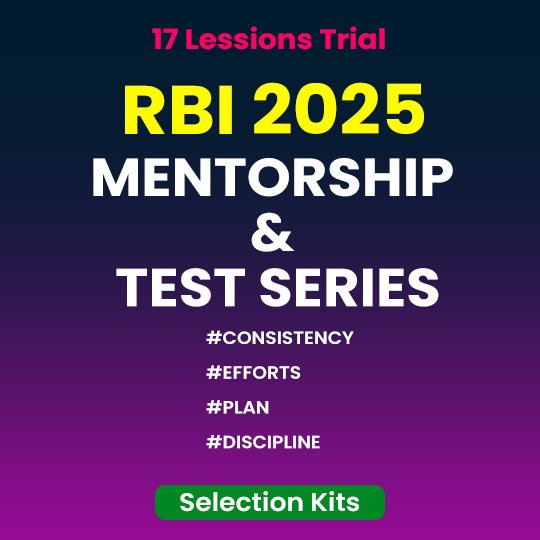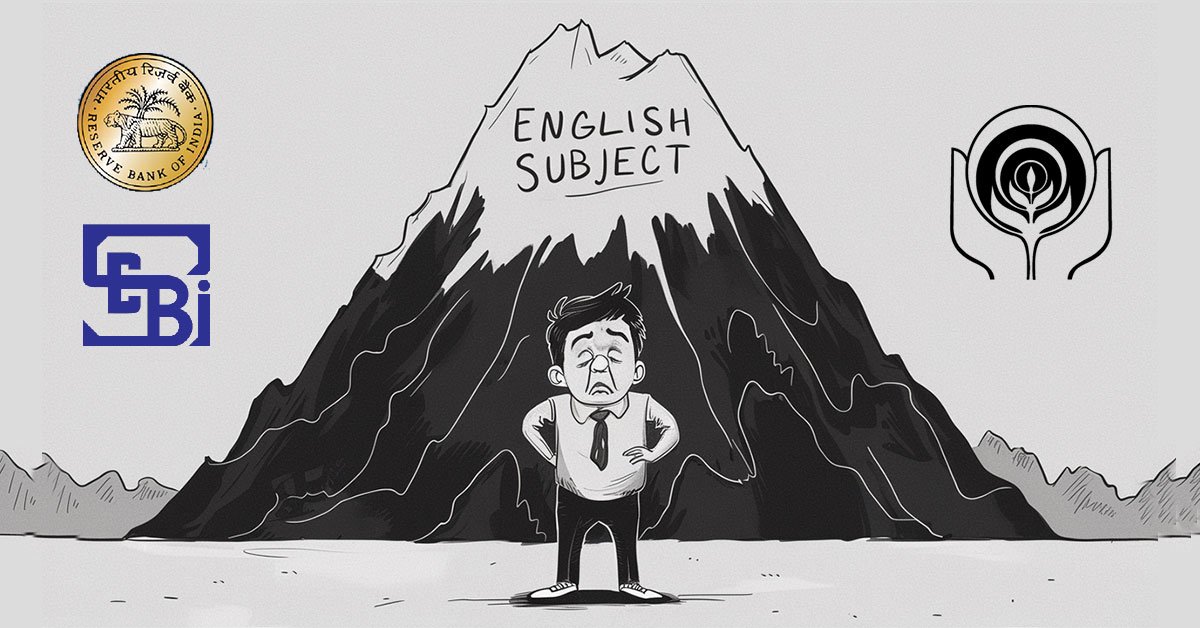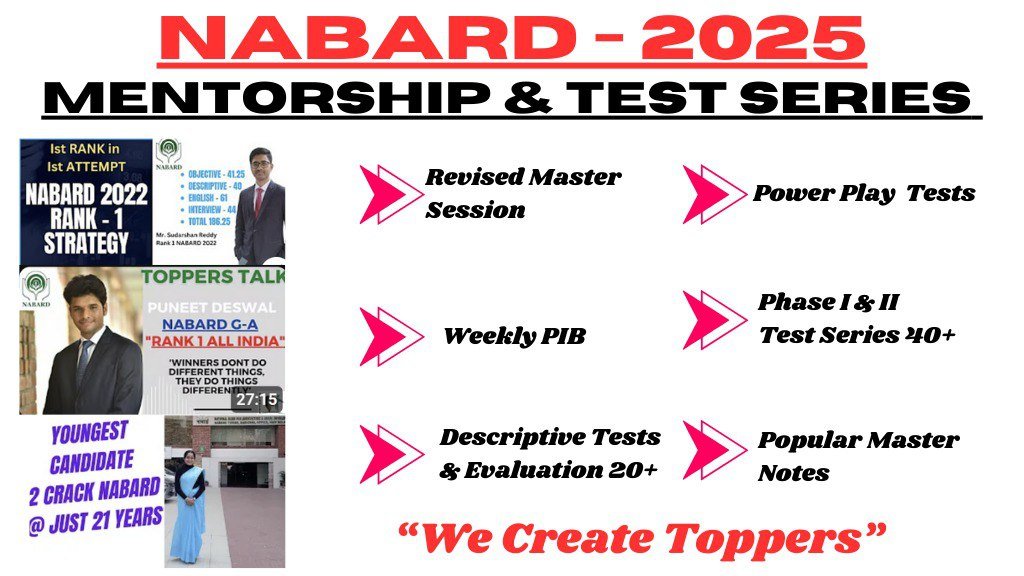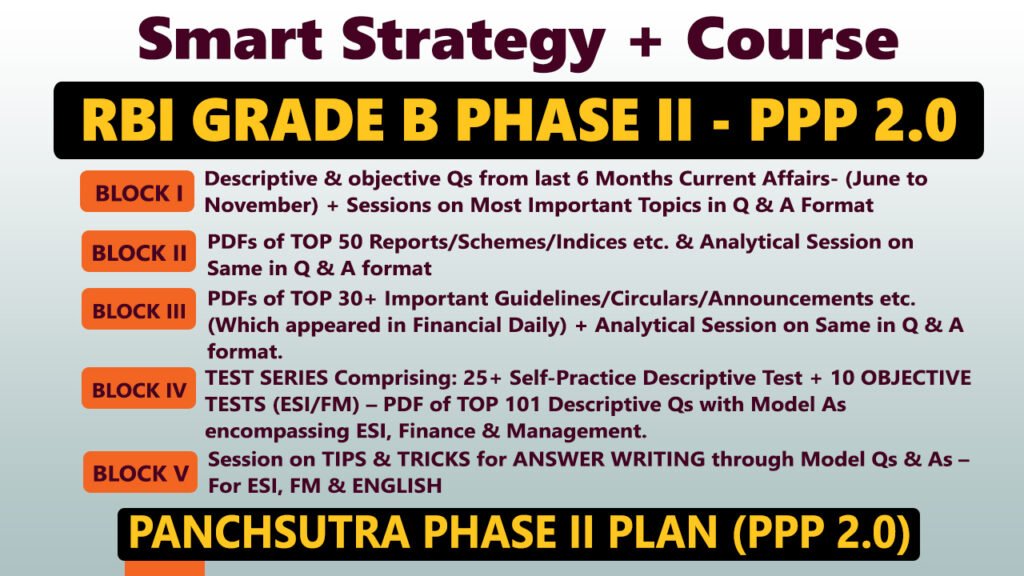1. Union Budget 2025-26 Summary
Context:
Finance Minister Nirmala Sitharaman on February 1, 2025, made history as she presented a record eighth consecutive budget, which comes in the backdrop of slowdown in economy and demand for tax cuts for middle class.
Theme: “Sabka Vikas” (Inclusive Growth)
- Zero poverty
- 100% good quality education
- Universal healthcare
- Skilled labor & meaningful employment
- 70% women in economic activities
- India as the food basket of the world”
Economic Growth Strategy: 4 Engines of Development
1st Engine: Agriculture
- Prime Minister Dhan-Dhaanya Krishi Yojana (100 districts) to increase productivity, crop diversification, storage, irrigation, and credit.
- Rural Prosperity & Resilience Programme for skill development, investment, and tech adoption.
- 6-year “Mission for Aatmanirbharta in Pulses” (Tur, Urad, Masoor) with procurement by NAFED & NCCF.
- National Mission on High-Yielding Seeds, Cotton Productivity, and Comprehensive Programme for Fruits & Vegetables.
- Kisan Credit Card Loan Limit Increased from ₹3 lakh to ₹5 lakh under modified interest subvention scheme.
2nd Engine: MSMEs (Micro, Small & Medium Enterprises)
- Investment & Turnover Limits Enhanced (2.5x & 2x) for MSME classification.
- Credit Availability Expanded with guarantee cover.
- New Scheme for Women, SC/ST Entrepreneurs: ₹2 crore term loans for 5 lakh first-time entrepreneurs.
- National Manufacturing Mission for “Make in India”.
- Toy Industry Support to establish India as a global toy manufacturing hub.
3rd Engine: Investment
- Investment in People – 50,000 Atal Tinkering Labs in Government schools.
- Broadband connectivity for all Govt schools & rural health centers under Bharatnet.
- Bharatiya Bhasha Pustak Scheme: digital Indian-language books
- National AI Centre for Education: ₹500 crore outlay
- Gig Workers’ Identity Cards & registration under e-Shram portal.
- Investment in Economy
- Infrastructure Ministries to Launch 3-Year PPP Project Pipeline”
- ₹1.5 lakh crore for 50-year Interest-Free Loans to States for capital expenditure.
- Second Asset Monetization Plan (2025-30): ₹10 lakh crore for new projects.
- Urban Challenge Fund (₹1 lakh crore) for smart city & sanitation projects.
- Investment in Innovation
- ₹20,000 crore for Private Sector-led R&D & Innovation.
- National Geospatial Mission for urban planning.
- Gyan Bharatam Mission on manuscript conservation & digitization of Indian knowledge.
4th Engine: Exports
Export Promotion Mission for MSMEs
- BharatTradeNet (BTN) Digital Infrastructure: to facilitate hassle-free international trade.
- Domestic Manufacturing: Support for Industry 4.0.
- Air Cargo Infrastructure: Upgrades to access perishables & high-value exports
Reforms: The Fuel for Growth
Part A: Financial Sector & Regulatory Reforms
FDI in Insurance Raised to 100% provided the whole premium is invested in India.
- Light-Touch Regulatory Framework based on principles & trust.
- High-Level Committee for Regulatory Reforms (1-year deadline).
- Investment Friendliness Index for States (2025).
- Jan Vishwas Bill 2.0 to decriminalize 100+ provisions across laws.
Fiscal Consolidation
- Fiscal Deficit Target
- Budgetary Provisions
- Total Receipts (excl. borrowings): ₹34.96 lakh crore
- Total Expenditure: ₹50.65 lakh crore
- Net Tax Receipts: ₹28.37 lakh crore
Part B: Taxation & Customs Reforms
Direct Taxation
New Income Tax Slabs under Revised Regime
| Total Income (₹) | Tax Rate |
|---|---|
| 0 – 4 Lakh | NIL |
| 4 – 8 Lakh | 5% |
| 8 – 12 Lakh | 10% |
| 12 – 16 Lakh | 15% |
| 16 – 20 Lakh | 20% |
| 20 – 24 Lakh | 25% |
| Above 24 Lakh | 30% |
- More Tax Exemption for Middle Class:
- No tax up to ₹12 lakh annual income.
- Salaried individuals with ₹12.75 lakh income pay NIL tax (₹75,000 standard deduction).
- Revenue loss: ₹1 lakh crore
- Benefits to Senior Citizens
- Exemption on TDS of interest increased from ₹50,000 to ₹1 lakh.
- TDS exemption threshold for rent increased from ₹2.4 lakh to ₹6 lakh.
- National Savings Scheme & NPS Vatsalya accounts exempted from TDS.
Voluntary Compliance & Ease of Doing Business
- The return filing is extended up to 4 years from 2 years.
- Charitable trust registration is extended from 5 to 10 years.
- Enhanced Safe Harbour Rules for certainty in international taxation.
- Presumptive taxation for foreign service providers in electronics manufacturing.
- Incentives for Startups & Sovereign Wealth Funds till 2030.
Customs & Trade Facilitation
- Customs Tariff Rationalization
- 7 tariffs withdrawn, single cess/surcharge policy.
- 36 life-saving drugs & 37 Patient Assistance Programme medicines fully exempted from BCD.
- Domestic Manufacturing Boost
- 25 critical minerals, lithium-ion battery components, & shipbuilding materials exempted.
- “Make in India” Incentives for textiles, semiconductors, electronics.
- Export Promotion
- Handicrafts Export Incentives.
- Wet Blue Leather Exemption for value addition & employment.
- Frozen Fish Paste BCD decreased from 30% to 5%
- Fish Hydrolysate BCD reduced from 15% to 5%
Conclusion
- Union Budget 2025-26 would be the harbinger of economic growth through inclusivity, investment, and innovation.
- Sabka Vikas theme: Prosperity for farmers, MSMEs, women, and youth.
- Tax policies will boost savings, consumption, and investment in the middle class.
- Continued fiscal prudence and reforms for enhanced global competitiveness of India.
2. Union Budget 2025-26: Major Agricultural Reforms
Context:
Stressing ‘Agriculture as the First Engine’ for India’s development, Finance Minister Nirmala Sitharaman announced a slew of measures to boost ‘agricultural productivity, farmer incomes, and rural growth’.
Key Highlights
Makhana Board in Bihar
A Makhana Board will be constituted in Bihar for enhancing production, processing, value addition, and marketing.
- Organize farmers into FPOs, train them, and ensure access to government schemes.
National Mission on High Yielding Seeds
- Focus on strengthening research and commercial availability of more than 100 new seed varieties (high yield, pest-resistant, and climate-resilient).
- Supports scientific advancements to improve agricultural productivity.
Second Gene Bank for Genetic Conservation
- A Gene Bank with 10 lakh germplasm lines for future food and nutritional security.
- Supports both public and private sectors working for genetic conservation.
Mission for Cotton Productivity
- A five-year mission towards cotton farming sustainability and productivity.
- Extra-long staple cotton is to be aimed at for quality supply of textiles to Indian industry.
- Furthermore, with the 5F vision in place, Farm to Fibre to Factory to Fashion to Foreign.
Kisan Credit Card (KCC) Loan Limit Increased
Increased the short-term loan limit under the Modified Interest Subvention Scheme from ₹3 lakh to ₹5 lakh.
- Beneficiaries: 7.7 crore farmers, fishermen and dairy farmers (Better access to credit).
Urea Plant in Assam
- Namrup, Assam -a new Urea plant with a capacity of 12.7 lakh metric tons a year. This would complement the revival of three existing dormant urea plants in the Eastern region. Supports Atmanirbhar Bharat in the production of fertilizer.
Boost to the Fisheries Sector
India stands as the world’s second-largest fish producer and contributes to the world’s highest seafood export at ₹60,000 crores.
A new framework for sustainable fisheries in the Exclusive Economic Zone and High Seas.
Special focus on Andaman & Nicobar and Lakshadweep Islands to unlock marine potential.
Conclusion
This budget highlights agriculture as a prime growth driver, through initiatives in the areas of crop production, genetic conservation, credit access, fertilizers, and fisheries. It primarily aims to increase farmer incomes, enhance rural development, and boost India’s international competitiveness in agriculture.
3. Union Budget 2025-26: Agricultural Growth & Rural Prosperity
Union Finance Minister Nirmala Sitharaman, while tabling the Union Budget 2025-26, marked agriculture as one of four pillars of economic growth – alongside MSMEs, investment, and exports. A number of new initiatives seek to boost productivity, enhance rural employment opportunities, and help farmers become more financially independent.
Key Highlights
Prime Minister Dhan-Dhaanya Krishi Yojana
- Inspired by the Aspirational Districts Programme, this initiative will cover 100 low-productivity agricultural districts.
- Key focus areas:
- Enhancing productivity through modern farming techniques.
- Crop diversification & sustainable practices to improve yield.
- Better post-harvest storage at panchayat and block levels.
- Irrigation improvements for efficient water use.
- Easy access to long-term and short-term credit for agriculture. As estimated, the scheme will benefit 1.7 crore farmers.
Rural Prosperity and Resilience Programme
This is a multi-sectoral initiative that will address under-employment in agriculture, and boost the rural economy. Focus areas on this programme include skilling, investment, and technology adoption to create jobs.
- Financial autonomy for rural women through enterprise. This is through job and entrepreneurship opportunities for younger farmers & rural youth. It involves warehousing and productivity enhancements for the small & marginal farmers. This is aimed at increasing income-generating activities for landless households.
- Stage 1: Will be over 100 developing agri-districts, wherein best practices from across the globe and within the country would be integrated with support from the multilateral development banks.
Mission for Aatmanirbharta in Pulses (6-Year Plan)
- Designed for achieving self-sufficiency in Tur, Urad, and Masoor pulses.
- Major initiatives undertaken were:
- Climate-resilient seed varieties with high protein content.
- Better farming techniques leading to higher productivity.
- Better post-harvest storage & management.
- Indicative procurement & remunerative prices to registered farmers.
- Procurement agencies (NAFED & NCCF) will procure pulses from registered farmers for the next four years.
Holistic Program for Fruits & Vegetables
- Enhances increased production, processing, and efficient supply chains.
- Partnership & institutional support for each and every state:
- Better price realization for farmers.
- Access to domestic & export markets will increase. .
- FPOs and cooperatives will expand.
Grameen Credit Score Framework
- Public Sector Banks will formulate a credit scoring system for Self-Help Group (SHG) members & rural borrowers.
Aims to improve financial inclusion & access to credit in rural India.
Conclusion
The Union Budget 2025-26 will focus on agriculture and rural resilience through enhanced productivity, farmer financial security, and diversification of rural income sources. This will help in building the agricultural backbone of India and will spur sustainable economic growth in rural areas.
4. Union Budget 2025-26: Consolidating Credit Flow & Accelerating Entrepreneurship
Context:
In the Union Budget 2025-26, Union Finance Minister Nirmala Sitharaman made several impactful announcements to further strengthen credit availability, MSMEs, Startups, first-time entrepreneurs and enhance exports by way of initiatives in the area.
Key Highlights
Enhancement of Credit Guarantee Cover
- To facilitate easier access to credit, the government has further expanded credit guarantee cover for:
- Micro and Small Enterprises (MSEs): Now increased from ₹5 crore to ₹10 crore, resulting in ₹1.5 lakh crore in additional credit over the next five years.
- Start-ups: Now from ₹10 crores to ₹20 crores, with reduced guarantee fee of 1% on loans in the 27 focus sectors, under Atmanirbhar Bharat.
- Well-Run Exporter MSMEs: Term loan guarantee cover up to ₹20 crore for export-oriented units.
Credit Cards for Micro Enterprises
- New customized credit cards with a limit of ₹5 lakh for micro enterprises registered on the Udyam portal.
- Target: 10 lakh cards in the first year.
Fund of Funds for Startups
- Existing Alternate Investment Funds (AIFs) have received commitments of over ₹91,000 crore, supported by the ₹10,000 crore Fund of Funds.
- New Fund of Funds will be set up with an additional ₹10,000 crore contribution, expanding its scope to support more startups.
Scheme for First-Time Entrepreneurs
A new scheme shall be launched, targeting 5 lakh first time entrepreneurs from women, Scheduled Castes(SCs), Scheduled Tribes (STs), over the course of the five years. Over the next five years, all these shall offer term loans, up to the tune of 2 crores. Inspired in every way through the successful program Stand-Up India, the above scheme shall consist of online training programs for entrepreneurs and managerial practices.
- A Deep Tech Fund of Funds will be explored to catalyze next-generation startups in advanced technologies that will fuel innovation and global competitiveness.
Export Promotion Mission
A dedicated Export Promotion Mission shall be established and jointly driven by the Ministries of Commerce, MSME and Finance.
- The key focus areas are:
- Easier access to export credit.
- Cross-border factoring support.
- Support to MSMEs in overcoming non-tariff barriers faced in international markets.
- The budget introduces bold credit expansion, increased funding for startups, and export promotion initiatives to strengthen India’s MSME and startup ecosystem.
- These measures aim to boost entrepreneurship, facilitate easy credit access, and position India as a global business hub while ensuring inclusive growth for women and marginalized communities.
5. Union Budget 2025-26: Boosting Exports & Strengthening Global Trade Integration
Context:
Union Finance Minister Nirmala Sitharaman emphasized exports as a key engine of India’s growth, unveiling reforms to enhance domestic manufacturing, integrate with global supply chains, and improve trade infrastructure.
Key Announcements
BharatTradeNet (BTN): Digital Public Infrastructure for Trade
- BharatTradeNet (BTN) to be established as a single window for trade documentation and financing solutions.
- Will be an adjunct to the Unified Logistics Interface Platform (ULIP) and in line with international trade practices.
- Will simplify trade processes, increase efficiency, and enhance India’s export competitiveness.
Enhancing India’s Position in Global Supply Chains
- Support for domestic manufacturing to better integrate into global supply chains.
- Sectoral identification based on objective criteria to determine key industries for integration.
- Facilitation groups with senior government officials and industry representatives to be formed for select products and supply chains.
Boosting Domestic Electronics & Industry 4.0
- Domestic electronic equipment industry support by the government to capitalize on the opportunities arising from Industry 4.0.
- Skilling of India’s youth for the world’s requirements in cutting-edge technologies.
National Framework for Global Capability Centres (GCCs)
- New National Framework:
- For States on Global Capability Centres (GCCs), with special emphasis on Tier-2 cities.
- 16 key proposals have been suggested for:
- Improve talent availability & infrastructure.
- Reform building bylaws.
- Put in place industry collaboration mechanisms.
Conclusion
The Union Budget 2025-26 provides a pedestal for the enhancement of India’s trade participation in the world by: Digitizing trade infrastructure (BTN) to make India at par with the world at large. Enhancing domestic manufacturing capabilities for India’s integration into the global supply chain. Foster Industry 4.0 capabilities for future employability.
6. Union Budget 2025-26: Urban Development, Housing & Gig Economy
Context:
Union Finance Minister Nirmala Sitharaman presented key initiatives in urban development, focusing on modernizing cities, enhancing the livelihoods of the urban citizenry, housing, and workers in the gig economy.
Key Announcements
₹1 Lakh Crore Urban Challenge Fund
- Will support projects under Cities as Growth Hubs, Creative Redevelopment, and Water & Sanitation.
- ₹10,000 crore in 2025-26.
- Covers up to 25 percent of project costs, with 50 percent funding from bonds, bank loans, or public-private partnerships (PPPs).
National Geospatial Mission
- Seeks to upgrade land records, urban planning, and infrastructure design.
- Utilizes the PM Gati Shakti framework to accelerate project implementation.
Support for Urban Poor and Workers
- A new initiative will be based on socio-economic upliftment of urban workers.
- Focus areas are income generation, sustainable livelihoods, and quality of life.
Welfare of Gig Workers
- One crore gig workers will be issued identity cards and registered on the e-Shram portal.
- Health coverage will be made available under PM Jan Arogya Yojana.
Expansion of PM SVANidhi Scheme for Street Vendors
- Over 68 lakh street vendors have been benefited till date.
- New measures: More credit from banks to street vendors.
- UPI-linked credit cards with ₹30,000 credit limit. Capacity building support to the vendors.
Push to Affordable and Mid-Income Housing
- Under the Special Window for Affordable and Mid-Income Housing (SWAMIH), 50,000 housing units have been completed, along with an additional 40,000 to be completed in 2025.
- SWAMIH Fund 2 will be rolled out with ₹15,000 crore as a blended finance facility contributed by the government, banks, and private investors.
- The new fund is expected to accelerate completion of an additional one lakh housing units.
Conclusion
The Union Budget 2025-26 promotes urban transformation through the following steps: Boosting infrastructures and re-development by the amount of providing funds through the Urban Challenge Fund. Leverage technology for better urban planning through Geospatial Mission. Support gig workers and street vendors by immediately recognizing their identity, healthcare support, and credit access. Accelerate the affordable housing projects for the benefit of middle-class families.
7. Union Budget 2025-26: Maritime, Aviation, and Infrastructure Development
Context:
The Indian Union Finance Minister, Nirmala Sitharaman, outlined key initiatives along with maritime as well as aviation expansion with a view to improve connectivity, increase shipbuilding, and improve regional infrastructure.
Important Announcements
₹25,000 Crore Maritime Development Fund
- Long-term finance support for the maritime industry.
- Government to contribute up to 49%, with the rest mobilized from ports and private players. Aims to enhance competition and sectoral growth.
Revamp of Shipbuilding Financial Assistance Policy
- Addresses cost disadvantages in shipbuilding.
- Credit Notes for shipbreaking in Indian yards to promote the circular economy.
- Big ships above a specified size to be covered in the HML infrastructure harmonized master list.
Shipbuilding Clusters
- More in terms of infrastructure investments, skilling, and technology.
- Increase in the number of ship categories and capacity.
Tax Benefit of Ship Building & Ship Breaking Extended
- Exemption of the Basic Custom Duty on raw materials, components, and consumables extended for a period of 10 years.
- Similar relaxations for breaking of ships to make the country more competitive.
Scaling up UDAN Regional Connectivity Scheme
- Modified UDAN to connect 120 new destinations.
- Targets 4 crore passengers in the next 10 years.
- Covers helipads and smaller airports in hilly, aspirational, and North-East region districts.
Air Cargo Infrastructure & Warehousing Upgradation
- Infrastructure developments for high-value perishable horticulture.
- Reworked protocols for cargo scanning and customs process for expeditious process.
Infrastructure Support for Bihar
- Greenfield airports to be created in Bihar.
- Up-gradation of the Patna airport and brown field airport at Bihta.
- Financial support towards the Western Koshi Canal ERM Project and 50,000 hectares of farmland affected in the region of Mithilanchal.
Conclusion
The budget emphasizes growth in the maritime and aviation sectors through: Enhancing shipbuilding through financial support and long-term arrangements. Increasing regional air connectivity through a modified UDAN scheme. Enhancing air cargo and warehousing infrastructure. Investment in Bihar’s aviation and agricultural infrastructure.
8. Union Budget 2025-26: Fostering Innovation & Education
Context:
Union Finance Minister Nirmala Sitharaman unveiled today a spate of big initiatives in education, skilling and research, the overarching theme for which is innovation, digital learning, and infrastructure development.
Major Announcements
Increase Atal Tinkering Labs in Schools
- 50,000 new Atal Tinkering Labs to be added over the next five years in Government schools.
- Develops scientific temperament and curiosity with innovative ideas among students.
Broadband Connectivity for Schools & Health Centres
- To connect all secondary government schools and primary health centers across the country under the BharatNet initiative.
Higher Education & IIT Expansion
- For the past decade, the count of enrollment in 23 IITs has nearly doubled to 1.35 lakh from 65,000.
- Five new IITs set up after 2014 with additional infrastructure to accommodate 6,500 more students.
- Hostel and other facilities at IIT Patna are being expanded.
Bharatiya Bhasha Pustak Scheme
- Digital Indian-language books for school and higher education to improve subject understanding.
National Centres of Excellence for Skilling
- Five Centres of Excellence for Skilling to be set up with global expertise and industry partnerships.
- Focus areas include curriculum design, trainer training, certification framework, and periodic reviews.
Centre of Excellence in Artificial Intelligence (AI) for Education
- ₹500 crore allocated for a dedicated AI Centre of Excellence in education.
₹20,000 Crore for Private Sector-Led R&D & Innovation
- Investment in private sector-driven research, development, and innovation.
- 10,000 fellowships under PM Research Fellowship Scheme to IIT and IISc students will have increased financial support.
Conclusion
The budget aims to encourage innovation and education through:
- Backing STEM education with new labs and digital resources.
- Improved rural broadband to cover schools, sub-health facilities and other vital buildings.
- Scalable infra at IIT for more enrollment of students. This will drive investments in strategically pushing research in AI and upscaling skill developments.
- These reforms shall prepare future ready skills across Indian youth besides developing global superiority of education and technological competencies.
9. Union Budget 2025-26: Investment in People & Healthcare
Context:
Union Finance Minister Nirmala Sitharaman highlighted investment in people, healthcare, and medical innovation as key drivers of national development.
Key Announcements
Nutritional Support under Poshan 2.0 & Saksham Anganwadi
- Enhanced cost norms for nutritional support.
- Beneficiaries:
- 8 crore children.
- 1 crore pregnant women and lactating mothers.
- 20 lakh adolescent girls in aspirational districts & the Northeast.
Expansion of Healthcare Infrastructure
- Day Care Cancer Centres:
- To be set up in all district hospitals over the next three years.
- 200 centres to be established in 2025-26.
- Expansion of Medical College & Hospital:
- 10,000 new seats in medical colleges in the next year.
- Target of 75,000 seats in five years.
Medical Tourism & ‘Heal in India’ Initiative
- Private sector partnership for capacity building.
- Simplified visa norms to attract international patients.
Relief on Import of Life-Saving Drugs & Medicines
- BCD exemptions
- 36 new life-saving drugs fully exempted.
- 6 additional medicines to get concessional 5% duty.
- Includes drugs for cancer, rare diseases, and severe chronic conditions.
- Exemption for Patient Assistance Programmes
- 37 additional medicines added.
- 13 new assistance programmes included.
Conclusion
The budget speaks of integral investment in human resources with:
- Infrastructural investment in health with new cancer care centers and additional medical seats
- Improving nutritional interventions for children, women, and adolescents
- Boosting medical tourism, making India the global health tourism destination
- Lower treatment costs with exempted duties on essential medicines.
10. Union Budget 2025-26: Investment in the Economy & Infrastructure
Context:
Finance Minister Nirmala Sitharaman unveiled major reforms on infrastructure, state development, asset monetization, mining, and domestic manufacturing.
Key Announcements
Public-Private Partnerships (PPP) in Infrastructure
- Each of the infrastructure-related ministries will formulate a 3-year project pipeline for the implementation of PPP.
- States encouraged to approach India Infrastructure Project Development Fund (IIPDF) to develop PPP proposals.
Infra Development Support to States
- Interest-free loans for 50 years amounting to ₹1.5 lakh crore allocated.
- Incentives based on capital expenditure and state-level reforms.
Asset Monetization Plan (2025-30)
- Launched a new ₹10 lakh crore Asset Monetization Plan, based on the 2021 initiative. Focus on reinvesting capital in new projects with better regulatory and fiscal measures.
Mining Sector Reforms
- Reforms for minor minerals, with emphasis on best practices. State Mining Index to evaluate and encourage mining efficiency at the state level.
PM Gati Shakti Data Access for Private Sector
- Relevant data and maps from the PM Gati Shakti portal to be made available.
- Aims to assist the private sector in project planning and execution.
Support for Domestic Manufacturing & Critical Minerals
- Full exemption on imports of:
- Cobalt powder and waste.
- Scrap of lithium-ion battery.
- Lead, Zinc, and 12 other critical minerals.
- Objective:
- Available raw material supplies for domestic manufacture.
- Provide more employment for India’s young generation.
Conclusion
The budget is to make investment in the economy speed up with:
- PPPs with infrastructure to make stronger.
- Financial support for reforms by states.
- Asset monetization expansion to free up capital for new projects.
- Domestic manufacturing growth through exemptions for critical minerals.
11. Union Budget 2025-26: Focus on Tourism and Knowledge Heritage
Context:
The Union Budget 2025-26 presents significant measures to promote tourism as a driver of employment-led growth and preserve India’s rich cultural heritage.
Key Announcements
Tourism as an Employment Sector
- Skill Development
- Intensive training programs will be organized for youth, with a focus on hospitality management.
- Homestay through MUDRA Loans
- Fund will be arranged for homestays, and this way, small scale tourism ventures would be encouraged.
- Facilitating Tourism connectivity
- Ease of travel and connecting tourists to other destinations will be enhanced.
- E-visa Facilities
- The e-Visa will be streamlined with the intention to ease international tourism.
- Performance-based Incentives
- There will be an incentive scheme depending on the performances of states to boost tourism.
Development of Main Tourist Sites
- 50 Top Destinations
- The top 50 tourist places in India are to be developed in a challenge mode with the states.
- State Supported Infrastructure
- The states will support the country by giving the land for infrastructure projects, like hotels included in the infrastructure HML.
- Spiritual and Religious Destinations
- Special thrust will be on spiritual and religious destinations, particularly Lord Buddha-related destinations.
- Medical Tourism
- Medical tourism will be promoted under the “Heal in India” initiative, with private sector partnerships, capacity building, and simplified visa norms.
Gyan Bharatam Mission
- Preservation of Knowledge Heritage
- The documentation and conservation of India’s manuscript heritage will be undertaken in collaboration with academic institutions, museums, and private collectors.
- National Digital Repository
- A National Digital Repository of Indian knowledge systems will be created to facilitate knowledge sharing.
Conclusion
The Budget supports tourism development, with the aim of generating huge employment and promoting both domestic and international tourism while sustaining cultural preservation through the Gyan Bharatam Mission. An integrated approach will thus be undertaken, leveraging rich history, spiritual tourism, and expanding medical tourism sectors of India for sustainable growth.
12. Union Budget 2025-26: Vision for ‘Sabka Vikas’ and Balanced Growth
Context:
Presenting the Union Budget 2025-26, Union Finance Minister Smt. Nirmala Sitharaman focused on India’s growth trajectory and highlighted the singular opportunity of the next five years for the realization of the vision of ‘Sabka Vikas’.
Key Highlights of the Budget
India’s Growth Potential
- Fastest-Growing Economy
- India remains the fastest major global economy growing, and their last 10 years of structural reforms have always been under strict global focus.
- Global Confidence
- There has been a great development in global confidence about the country’s capabilities and its potential as it has always placed it high on the global map.
Accelerating Growth & Inclusive Development
- The budget from the union will target inclusive development based on balanced growth in all sections, which is that the fruit of the economy reaches the people from each sector.
- For boosting private investment, augmenting the consumption power of the household economy, and changing the optimism of India’s rising middle class.
Four Growth Drivers
- The four potent growth drivers outlined in Union Budget 2025-26 are Agriculture, MSMEs, Investment and Exports. This budget will usher in transformative reforms in the following six critical areas regarding:
- Taxation
- Power Sector
- Urban Development
- Mining
- Financial Sector
- Regulatory Reforms
Vision for ‘Viksit Bharat’
- Inclusivity will take India’s development path towards:-
- Zero-poverty
- Quality school education for all
- Affordable healthcare
- Skilled labour and gainful employment
- Women’s economic participation (70% women in economic activities)
- Farmers are a part of the ‘status of India as the ‘food basket of the world’.
Ten Key Development Measures
- The FM mooted 10 broad areas that are to be in focus in the years ahead:
- Agricultural Growth & Productivity Rural Prosperity
- Resilience Inclusive Growth Manufacturing
- Make in India
- MSME Support
- Employment-led Development
- Investment in People
- Economy & Innovation
- Energy Supply Security
- Promotion of Exports
- Nurturing Innovation
Conclusion
This bold commitment towards developing a Viksit Bharat by the Union Budget 2025-26 rests on inclusivity, empowerment, and innovation towards sustainable growth. The speech of the Finance Minister once again highlights the need for nurturing all sectors and regions in order to balance, make equal, and benefit in the long run.
13. Union Budget 2025-26: Enhanced Jal Jeevan Mission
Context:
In Union Budget 2025-26, Smt. Nirmala Sitharaman, Union Finance Minister outlined these enhancements while launching the Implementation of Jal Jeevan Mission providing universal accessible rural drinking water
Jal Jeevan Mission
- Escalating budget outlay
- Budget Outlay for Jal Jeevan Mission has surged up to Rs.67,000 Crore.
- The mission timeline has been extended till 2028 to complete the objectives of the mission fully.
Impact Till Date
- The mission has ensured access to tap water connections for 15 crore households covering approximately 80% of India’s rural population since its launch in 2019.
100% Coverage Target
- The mission looks to deliver 100% coverage over rural households with potable water connections over the next three years.
Infrastructure and Sustainability Focus
- The mission will now focus on:
- Improving the quality of infrastructure.
- Strenghthening O&M of rural piped water supply systems.
- Ensuring sustainability and citizen-centric water service delivery through “Jan Bhagidhari” (community participation).
MoUs with States/UTs
In MoUs with states and Union Territories (UTs) separately, the sustainability of the project will be ensured. The scheme will be followed in a more community-oriented approach.
Conclusion
The Union Budget 2025-26 also aims to strengthen the Jal Jeevan Mission with more funding and extension of the mission till 2028. Under this mission, there is emphasis on infrastructure quality, sustainability, and community participation to ensure universal access to clean water across rural India.
14. Union Budget 2025-26: Reforms in Nuclear Energy and Electricity Sector
Context:
During her Union Budget 2025-26 speech, Smt. Nirmala Sitharaman, Union Finance Minister announced wide-ranging initiatives directed at the nuclear energy and electricity distribution reforms.
Nuclear Energy-Reforms in Electricity Sector
Nuclear Energy Mission
A Nuclear Energy Mission will be launched with research and development of Small Modular Reactors and would significantly invest Rs 20,000 crore.
- At least 5 indigenously developed SMRs should operationalize by 2033.
Nuclear Energy Development Targets
- The development of 100 GW of nuclear energy by 2047 is regarded as a must-do to ensure India’s energy transition process.
Private Sector Partnership
- Amendment to the Atomic Energy Act and the Civil Liability for Nuclear Damage Act is to be done by encouraging active participation of the private sector in the nuclear energy circle.
Reforms on Electricity Distribution and Transmission
Incentivisation of States for Electricity Distribution
- States shall be incentivized towards electricity distribution reforms as well as improving intra-state transmission capacity.
Additional Borrowing for States
- Incentivize such reforms by allowing states an incremental borrowing of 0.5% of their GSDP (Gross State Domestic Product), subject to the stated conditions of these reforms.
Conclusion
The Union Budget 2025-26 will set off a transformative course in the progress of nuclear energy with Small Modular Reactors (SMRs) that will further improve the electricity sector with state-level reform incentives. The initiatives undertaken are focused toward private sector involvement and electricity distribution reforms to advance India’s overall energy security and further improve the health of electricity firms.
15. Union Budget 2025-26: Boosting Rural Economy through India Post
Context:
In the Union Budget 2025-26 speech, Union Finance Minister Smt. Nirmala Sitharaman charted out key initiatives to position India Post once again as a facilitator of the rural economy.
India Post: Empowering Rural Economy
Rural Connectivity and Financial Services
- Using 1.5 lakh rural post offices and 2.4 lakh Dak Sevaks, services shall be scaled up and added rural economic growth to the India Post.
- It will make its India Post Payments Bank an instrument for achieving deepening of financial inclusion at the grassroots.
Large Scale Extension of Services
Service offerings under the India Post brand will expand broadly to encompass
- Rural Community Hub Co-location: Providing community services at the post office location
- Institutional Account Services: Provision of banking facilities to institutions.
- DBT, Cash Out and EMI Pickup: Easy Government transfer and picking of EMI for customers.
- Credit Service to Micro Enterprise: Proffering credit service to the small enterprise
- Insurance Service: Rendering insurance service to rural dwellers.
- Assisted Digital Services: Enabling digital literacy as well as the provision of other services in a community
India Post: The Public Logistics Organization
India Post will be positioned as the giant public logistics organization. All types of stakeholders would be targeted which include the Viswakarmas, entrepreneurs, women’s self-help groups, MSMEs and big business house organizations.
Conclusion
The Union Budget 2025-26 presents India Post as a catalytic force in the growth of the rural economy with its gamut of services, from financial inclusion to logistics. India Post will empower rural communities, entrepreneurs, and businesses with inclusivity and sustainable growth through an extensive network.
16. Union Budget 2025-26: Trade, Manufacturing, and Exports
Context:
The Union Budget 2025-26 presented by the Union Minister for Finance, Smt. Nirmala Sitharaman, has come up with various customs proposals with the objective of rationalizing the tariff structure, eliminating duty inversion, and supporting domestic manufacturing. These proposals are expected to give a fillip to exports, enhance trade, and provide relief to the common man.
Rationalizing Customs Tariff Structure
- Reduction of Tariff Rates: This Budget suggests removing from the stands seven tariff rates applicable for industrial goods. It had previously removed seven from the previous Budget 2023-24. Now, the remaining will only be eight, and one is the zero rate.
- Cess and Surcharge: There will be no more than one cess or surcharge. Social Welfare Surcharge will be exempted on 82 tariff lines that attract a cess.
Relief on Import of Drugs/Medicines
- Exemption on Life-Saving Drugs: 36 life-saving drugs will be fully exempted from Basic Customs Duty (BCD), and 6 more medicines will attract a 5% concessional duty.
- Patient Assistance Programmes: 37 new medicines and 13 additional patient assistance programmes will be added to the list of fully exempt medicines, provided they are supplied free of cost to patients.
Domestic Manufacture and Value Addition
- EV and Mobile Battery Manufacturing: The Budget intends to exclude 35 more capital goods in EV battery manufacturing and 28 for mobile phone battery manufacturing from BCD for domestic manufacture of lithium-ion batteries.
- Critical Minerals Exemption: Full exemption under BCD will be provided to cobalt powder, lithium-ion battery scrap, lead, zinc, and 12 additional critical minerals. It will further support Indian manufacturing and employment.
- Textile Machinery: The scheme will exempt two more varieties of shuttle-less looms from BCD, encouraging technical textiles, including agro-textiles, medical textiles, and even **geo-textiles.”.
- Interactive Flat Panels: The Budget proposes to increase BCD on Interactive Flat Panel Displays (IFPD) from 10% to 20% and reduce BCD to 5% on Open Cell and other components, addressing inverted duty structure issues.
- Shipbuilding: The BCD exemption on raw materials and components for ship manufacturing will be extended for another 10 years.
- Ethernet Switches: The Budget reduces BCD of Carrier Grade ethernet switches from 20% to 10% on par with that of Non-Carrier Grade switches.
Export Promotion Measures
- Handicrafts Export: The time taken for exports of handicrafts would be increased from 6 months to 1 year, plus an additional extension of 3 months. There would be an addition of nine new items of handicrafts to the input list for duty-free.
- Leather Exports: Crust leather will be exempt from 20% export duty, and Wet Blue leather will be fully exempt from BCD to facilitate exports.
- Seafood Exports: The Budget proposes reduction of BCD from 30% to 5% on Frozen Fish Paste (Surimi) to make India more competitive in the international seafood market.
That develop Domestic MROs: Extend the import time period allowed for imported foreign-origin goods admitted for repair from 6 months to 1 year including railway goods that would boost domestic Maintenance, Repair, and Overhaul (MROs) for aircraft and ships.
Trade Facilitation and Ease of Doing Business
- Provisional Assessment Time Limit: To promote ease of doing business, the Budget proposes a two-year time limit (extendable by one year) to finalize provisional assessments under the Customs Act.
- Voluntary Compliance: Importers and exporters can now voluntarily declare material facts and pay duty with interest but without penalty, incentivizing voluntary compliance (excluding cases under audit or investigation).
- Increase time limit for imported inputs: The time limit of the use of imported inputs at end-use will be increased from six months to one year. This will allow room for easier maneuvering by businesses. In addition, quarterly statements instead of monthly statements.
Conclusion
The Union Budget 2025-26 shall act as a strong foundation to enhance domestic manufacturing, promote exports, and support trade through radical customs reforms. Simplification of tariffs, relief to critical sectors, and the ease of business operations are closely in line with the overall thrust for sustainable economic growth and competitiveness for India at the global level.
17. Union Budget 2025-26: Important Direct Tax Reforms
Context:
In the Union Budget 2025-26, Finance and Corporate Affairs Minister of India, Smt. Nirmala Sitharaman, presented a series of direct tax proposals toward better governance, minimizing compliance burden, and furthering economic growth. The reforms deal with personal income tax, voluntary compliance, and creating a business-friendly atmosphere.
Personal Income Tax Reforms
Income Tax Exemption for the Middle Class:
- No income tax for total income up to Rs. 12 lakh (average income of Rs.1 lakh per month) under the new regime.
- The limit will be Rs. 12.75 lakh for salaried taxpayers due to a standard deduction of Rs. 75,000.
Rationalization of TDS/TCS
- Senior Citizens: The TDS on interest limit for senior citizens will be doubled from Rs. 50,000 to Rs. 1 lakh.
- TDS on Rent: Limit of TDS on rent to be hiked to Rs. 6 lakh from Rs. 2.4 lakh that will reduce transactions falling under TDS liability for small taxpayers.
- TCS on Remittances: The Tax Collected at Source (TCS) threshold under the Liberalized Remittance Scheme (LRS) is to be raised from **Rs. 7 lakh to Rs. 10 lakh.
- Decriminalization of TCS Delays: Delays in TCS payment up to the due date of filing will be decriminalized.
Encouraging Voluntary Compliance
- Time for Filing Updated Income-tax Returns: Time-limit for filing the updated income tax returns for any assessment year will be enhanced from 2 years to 4 years.
- Reporting of Crypto Asset Transactions: Taxpayers will have to furnish details related to crypto-asset transactions in the statements.
- Virtual Digital Asset: Definition of the term Virtual Digital Assets shall be revised and aligned with new provisions.
Ease Compliance Burden
Charitable Trusts – The period of registration for small charitable trusts will be extended to 10 years from 5 years.
Self-Occupied Property: The taxpayers shall be allowed to claim Nil for the annual value of two self-occupied properties without any conditions.
- No Tax on Specified Goods: No tax will be collected at source on specified goods worth more than Rs. 50 lakh.
NO ISSUE PART OF THE GENERAL DISCUSSION - Arm’s Length Price Scheme: A new scheme will determine the arm’s length price for international transactions over a block period of 3 years, reducing annual transfer pricing examinations.
- Safe Harbour Rules: Safe harbour rules on international taxation would be broadened in scope to reduce litigation and bring in tax certainty.
- Long-term Capital Gains Tax for Non-Residents: The parity of tax rates will be introduced between non-residents on long-term capital gains from the transfer of securities.
- NPS Vatsalya Accounts: Withdrawals from National Savings Scheme accounts after 29th August 2024 will not be taxed. Similar treatment to be provided to NPS Vatsalya accounts.
Employment and Investment
- Electronics Manufacturing Tax Regime: A presumptive taxation regime to be provided for non-residents availing services by Indian companies in the electronic manufacturing sector.
- Tonnage Tax Scheme for Inland Vessels: The tonnage tax scheme would be introduced under the Indian Vessels Act, 2021, with regard to the inland vessels, so that inland water transport may be developed.
- Start-Up Support: The incorporation period for getting benefits would be enhanced by 5 years from the current 1st April 2030 onwards for start-ups incorporated before the same date.
- IFSC: The ship-leasing units, insurance offices, and global company treasury centers located in the IFSC will be accorded specific benefits, with the cut-off date extended to 31st March 2030.
- Alternative Investment Funds (AIFs): Tax certainty for Category I and II AIFs investing in infrastructure will be enhanced especially on gains from securities.
- Sovereign and Pension Fund Investments: The date of investment for sovereign wealth funds and pension funds will now be stretched as far as 31st March 2030 to encourage funding of infrastructure.
Conclusion
The Union Budget 2025-26 proposes a series of direct tax reforms to spur economic growth, enhance governance, and reduce compliance for individuals and businesses. The reforms will alleviate the middle class, lighten tax burdens, and provide a business-friendly environment for start-ups, electronics manufacturing, and infrastructure investment.
18. Union Budget 2025-26: Transformational Reforms in Financial Sector
Context:
While presenting the Union Budget 2025-26, Nirmala Sitharaman, the Union Finance Minister, declared crucial reforms in the financial sector for boosting investment, smoothening regulations, and global competitiveness during the next five years.
Key Announcements
Increased FDI Limit in Insurance
- FDI in the insurance sector limit increased to 100% from 74%. –
Only to companies that invest their entire premium within India. –
Existing guardrails and conditions for foreign investment will be streamlined.
Pension Sector Reforms
- A regulatory coordination forum will be created to help in designing and expanding pension products.
Simplification of KYC (Know Your Customer)
- Introduction of Overhauled Central KYC Registry by 2025.
- A more streamlined periodic system for KYC updates would cut down the burden of compliance.
Simplified Merging Process for Companies
- Simplification and rationalization of requirements and procedures for quick merger approvals.
- Expanding fast-track mergers will be simplified further, making the procedure easier for companies.
Bilateral Investment Treaties to be overhauled
- BIT model would be reshuffled so as to be more investor-friendly. This move is aimed at boosting sustained foreign investment while being aligned to the “First Develop India” vision.
Conclusion
They relate to sector reforms in finance aimed at luring investment and streamlining compliance while enhancing Indian competitiveness through a liberalizing world economy, thus accelerating further growth and better financial stability via liberalization in the insurance sector, streamlined merger rules, and updating investment treaties.
19. Union Budget 2025-26: National Manufacturing Mission & Industrial Growth
Context:
Nirmala Sitharaman will launch the ‘National Manufacturing Mission‘ which aims to develop India’s industrial sectors with its ‘Make in India‘ strategy. Under this plans to facilitates the policy support, implementation blueprints, and governance architecture to industries that cater to both – small, medium, and big-scale enterprises.
Important Revelations
National Manufacturing Mission
- Focus on five key areas:
- Ease and cost of doing business
- Future-ready workforce for high-demand jobs
- Strengthening MSME sector
- Technology availability and adoption
- Ensuring quality standards for products
- Support for Clean Tech manufacturing, including:
- Solar PV cells – EV batteries, motors, and controllers – Electrolyzers, wind turbines – Very high voltage transmission equipment – Grid-scale batteries
Boost to Labour-Intensive Sectors
- Targeted policies and facilitation measures for employment generation. Footwear & Leather Industry Support Scheme:
- Concentrate on design capacity, component manufacturing and machinery. It is also a part of support for non-leather and leather-based products. This is the one which will result in an expected impact as under: The new employment of 22 lakh The Turnover of ₹4 lakh crore The export of ₹1.1 lakh crore
National Action Plan for Toys
- Objective: Make India a global toy manufacturing hub.
- Focus areas:
- Cluster development
- Skill enhancement
- Manufacturing ecosystem for unique, high-quality, sustainable toys
- Branding under “Made in India”
Support for Food Processing Industry
Establishment of National Institute of Food Technology, Entrepreneurship and Management in Bihar.
- Key Benefits
- Enhancement of the food processing business in the eastern region.
- Ensuring richer incomes to farmers as a result of value addition. – Enhance skill generation, entrepreneurship opportunities, and jobs for young people.
Conclusion
The National Manufacturing Mission and sector-specific initiatives will drive industrial growth, create jobs, and enhance India’s global competitiveness with headline focus on clean tech, MSMEs, labor-intensive industries, and food processing to make India a stronger manufacturing powerhouse while attaining sustainability and economic inclusivity.



















